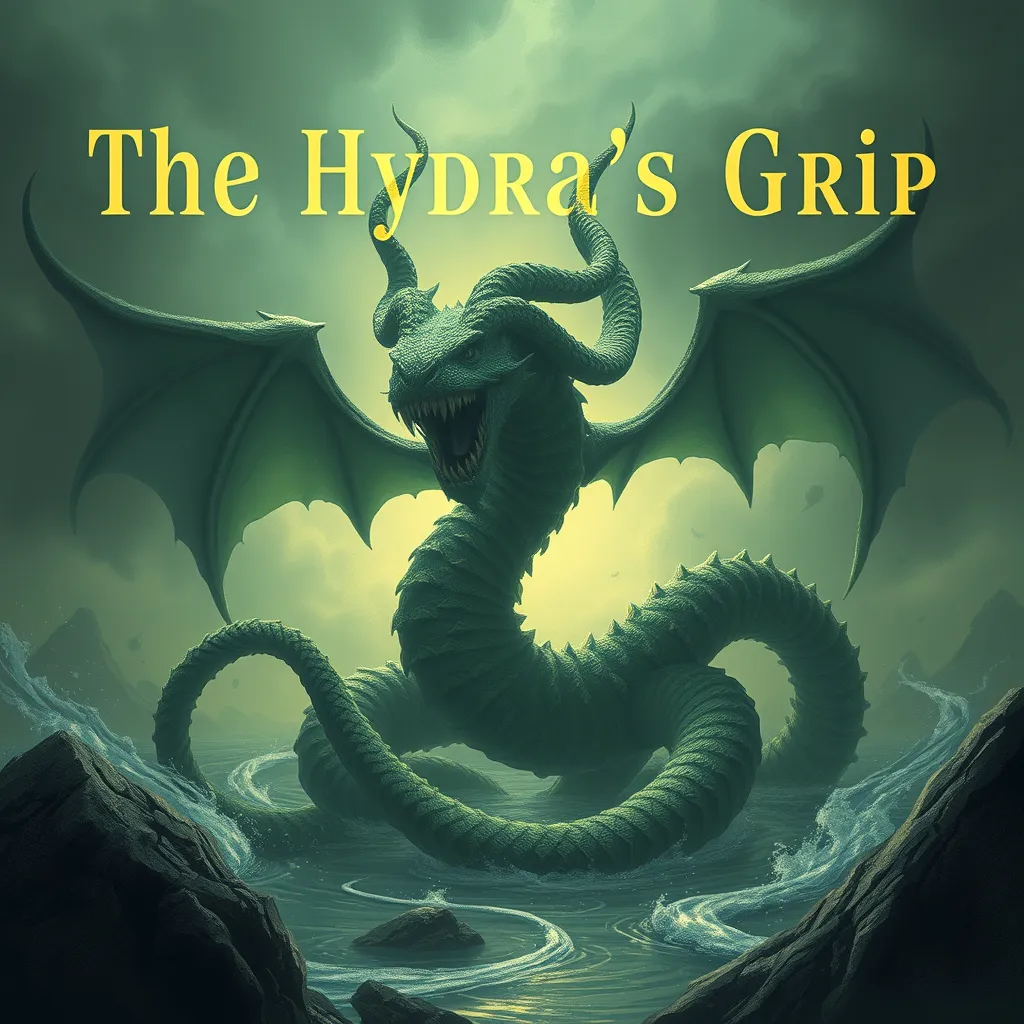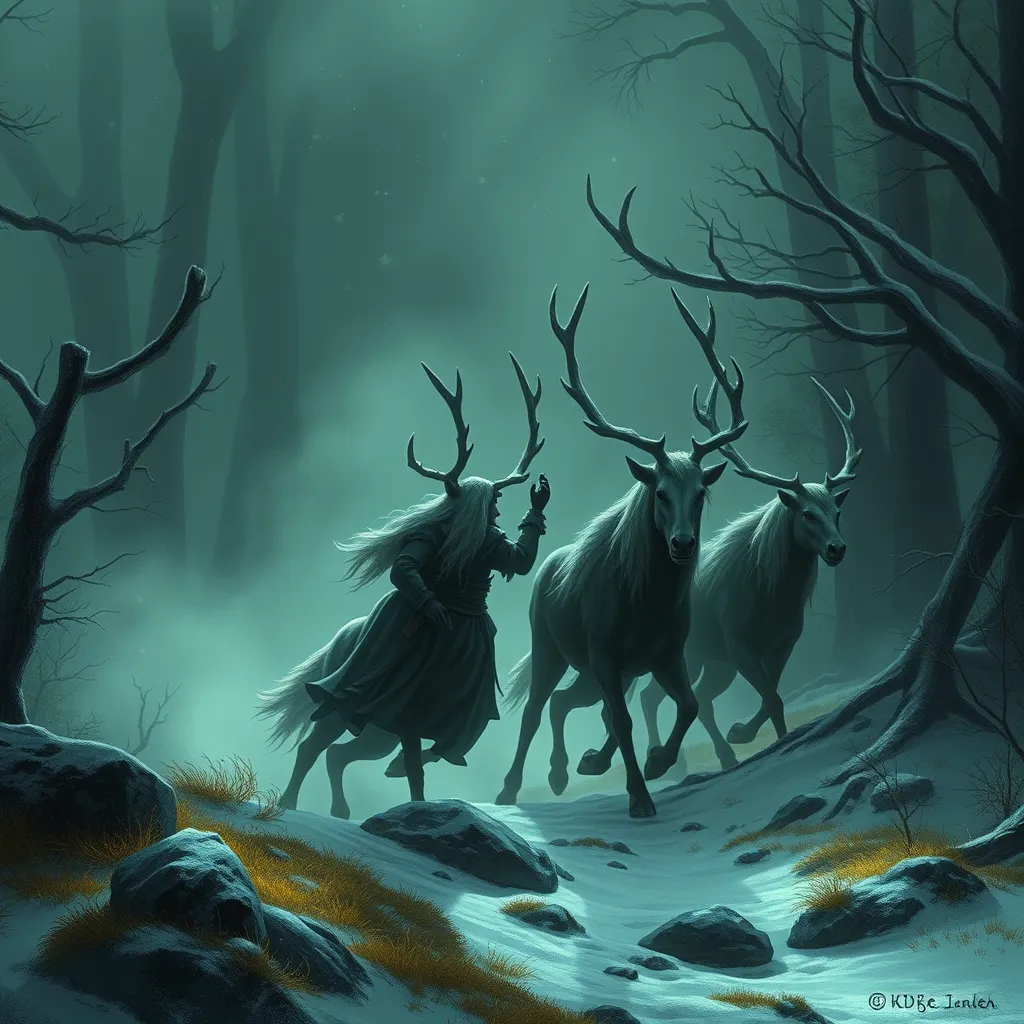The Hydra’s Grip: Exploring the Monster’s Impact on Literature, Art, and Culture
I. Introduction
The Hydra, a mythical creature from ancient Greek mythology, is often depicted as a serpent-like monster with multiple heads. Its origins can be traced back to various myths and legends that describe it as a formidable opponent, embodying chaos and destruction. The Hydra’s significance extends beyond its mythological roots, permeating various cultural contexts and embodying themes of regeneration, resilience, and the struggle against insurmountable challenges.
This article aims to explore the profound impact of the Hydra on literature, art, and culture throughout history, examining its role in shaping narratives and its enduring legacy in contemporary society.
II. The Hydra in Ancient Mythology
A. Origins in Greek mythology
The Hydra is primarily known from Greek mythology, particularly in the context of the myth of Hercules. It is described as a massive serpent-like creature dwelling in the swamps of Lerna, with the ability to regenerate its heads whenever one was severed.
B. The story of Hercules and the Twelve Labors
In the second of his Twelve Labors, Hercules was tasked with slaying the Hydra. This labor not only tested Hercules’ physical strength but also his ingenuity. With the help of his nephew Iolaus, Hercules discovered that cauterizing the necks after cutting off the heads prevented them from regenerating. Ultimately, Hercules was successful but faced challenges that highlighted the Hydra’s symbolic nature as a formidable adversary.
C. Symbolism of the Hydra as a multi-headed monster
The Hydra has come to symbolize various concepts, such as the idea of overcoming overwhelming odds, the complexity of evil, and the struggle against multiple challenges at once. Its multi-headed nature represents the idea that problems can multiply and become more complicated if not addressed properly.
III. Literary Representations of the Hydra
A. The Hydra in classical literature
In classical literature, the Hydra is referenced in works by authors such as Homer and Hesiod. These early texts depict the creature as a fearsome beast, embodying the chaotic forces of nature that heroes must confront.
B. Modern adaptations and reinterpretations in fiction
- In modern literature, the Hydra appears in various forms, often reinterpreted to fit contemporary themes.
- Authors like Rick Riordan have introduced the Hydra to younger audiences through fantasy series, blending ancient mythology with modern storytelling.
- Novels and stories that explore themes of personal growth often use the Hydra as a metaphor for internal struggles.
C. The Hydra as a metaphor in contemporary storytelling
Today, the Hydra can be seen as a metaphor for the challenges individuals face in the modern world, representing issues such as mental health, societal pressures, and personal conflicts. Its ability to regenerate mirrors the recurring nature of these challenges, emphasizing the need for resilience and determination.
IV. The Hydra in Visual Arts
A. Depictions of the Hydra in ancient pottery and sculpture
The Hydra has been a popular subject in ancient Greek pottery and sculpture. Artists depicted the creature in various forms, often illustrating the dramatic moments of Hercules battling the monster. These artworks provide insight into the cultural significance of the Hydra in ancient society.
B. Renaissance and Baroque interpretations of the Hydra
During the Renaissance and Baroque periods, the Hydra was often depicted as a symbol of chaos and destruction. Artists like Peter Paul Rubens captured the dramatic essence of the Hydra in their paintings, emphasizing the struggle between good and evil.
C. The Hydra’s influence on modern visual artists
Modern artists continue to draw inspiration from the Hydra, incorporating its imagery and symbolism into their work. The creature has appeared in various forms, from abstract representations to detailed illustrations, showcasing its versatility as a subject in contemporary art.
V. The Hydra in Popular Culture
A. Appearances in film and television
The Hydra has made numerous appearances in film and television, often portrayed as a monstrous antagonist. Movies like “Clash of the Titans” and TV shows such as “Hercules: The Legendary Journeys” have brought the creature to life, captivating audiences with its fearsome presence.
B. The Hydra in video games and comics
In the world of video games and comics, the Hydra continues to thrive. It is often featured as a boss character or a formidable enemy, challenging players with its regenerative abilities. Examples include:
- Games like “God of War” where players face off against the Hydra in epic battles.
- Comic series that incorporate the Hydra into larger narratives, often depicting it as a villain.
C. Cultural references and the Hydra’s role in popular mythos
The Hydra has become a part of popular mythos, appearing in various forms across different mediums. Its presence in memes, merchandise, and cultural references highlights its lasting impact on contemporary society.
VI. The Psychological and Symbolic Interpretation of the Hydra
A. The Hydra as a symbol of fear and the unknown
Psychologically, the Hydra represents the fears and uncertainties that individuals face. Its multi-headed nature can symbolize the many facets of anxiety and the unknown, making it a potent metaphor for the human experience.
B. The multi-headed nature of conflict and challenges
The Hydra’s ability to regenerate its heads serves as a reminder that conflicts can be multifaceted and complex. Addressing only one aspect of a problem may lead to the emergence of new challenges, necessitating a comprehensive approach to problem-solving.
C. The Hydra in psychological literature and analysis
In psychological literature, the Hydra can be analyzed as a representation of internal struggles. Therapists might use the creature as a metaphor for the various issues clients face, encouraging them to confront their fears and challenges head-on.
VII. The Hydra’s Legacy in Contemporary Culture
A. The ongoing relevance of the Hydra in modern storytelling
The Hydra’s legacy endures in contemporary storytelling, where it continues to symbolize the battle against overwhelming odds. Its presence in various narratives serves as a reminder of the resilience required to overcome life’s challenges.
B. The Hydra as a representation of contemporary societal issues
In today’s society, the Hydra can represent complex issues such as systemic problems, mental health challenges, and the multifaceted nature of human conflict. Its image serves as a powerful reminder of the interconnectedness of various societal issues.
C. The role of the Hydra in educational contexts and discussions
The Hydra is often used in educational contexts to discuss themes of mythology, storytelling, and symbolism. Its rich history provides a framework for exploring deeper societal issues and human psychology, making it a valuable subject for discussion.
VIII. Conclusion
A. Summary of the Hydra’s impact across literature, art, and culture
The Hydra has left an indelible mark on literature, art, and culture. Its representation of chaos, conflict, and resilience resonates across various mediums, illustrating the timeless nature of mythological creatures.
B. Reflection on the enduring nature of mythological creatures
Mythological creatures like the Hydra continue to captivate our imagination, serving as symbols of the struggles and triumphs inherent in the human experience.
C. Final thoughts on the Hydra’s place in the human imagination
As we navigate the complexities of modern life, the Hydra remains a powerful symbol, reminding us of our capacity to confront and overcome the multifaceted challenges we face.



